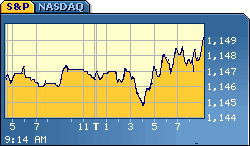The US dollar has been tossed around a lot lately. After finding a bottom at the beginning of last year everything changed again by mid summer when the credit crises kicked in and forced the Fed to lower interest rates. Since then the dollar has lost ground against a basket of currencies and got particularly hard hit against the euro. Large and abrupt currency movements are not welcomed and have a destabilizing effect on economies. While the movements in the dollar cross currency pairs have not been extreme yet, the possibility of an abrupt adjustment can not be excluded. Following is a list of the five most important factors, at least according to Jonathan Anderson that could mark the End of the Dollar Crisis.
- The looming weakness in Europe in response to US recession and its accompanying causes will force the ECB and other European central banks to begin lowering rates as well.
- It is not in the interest of Europe or Japan to endure an ever more competitive, falling dollar. If the strengthening pressure continues this countries will soon begin to intervene in foreign exchange markets.
- Emerging central banks have been intervening steadily and heavily over the past five years and will almost certainly continue to do so going forward.
- As the US economy slows, crude oil prices should stabilize and subside somewhat; the current global grain inflation scare is also a cyclical issue, as the new harvest should prove. And unlike the 1970s, there’s no evidence that commodities inflation is spreading to other core goods and services prices. Less US inflation means less structural pressure on the dollar to depreciate over the medium term.
- Finally, there’s no real risk of other central banks or sovereign wealth funds “dumping the dollar”. The logic is straightforward: they have nowhere else to go.
While these are five excellent points it is worth to remember that financial markets are, according to some, in the midst of the largest financial crises since the Great Depression. Although these woes are truly global, the US economy is more interlinked with the financial system and faced with the double whammy of a severe housing recession and a consumer slowdown. The picture will brighten the moment housing has bottomed, but for now light at the end of the tunnel for the dollar remains elusive.

source: The End of the Dollar Crisis
By Jonathan Anderson, Caijing Magazine
http://www.caijing.com.cn/English/IndexList/2008-04-01/54815.shtml



No comments:
Post a Comment